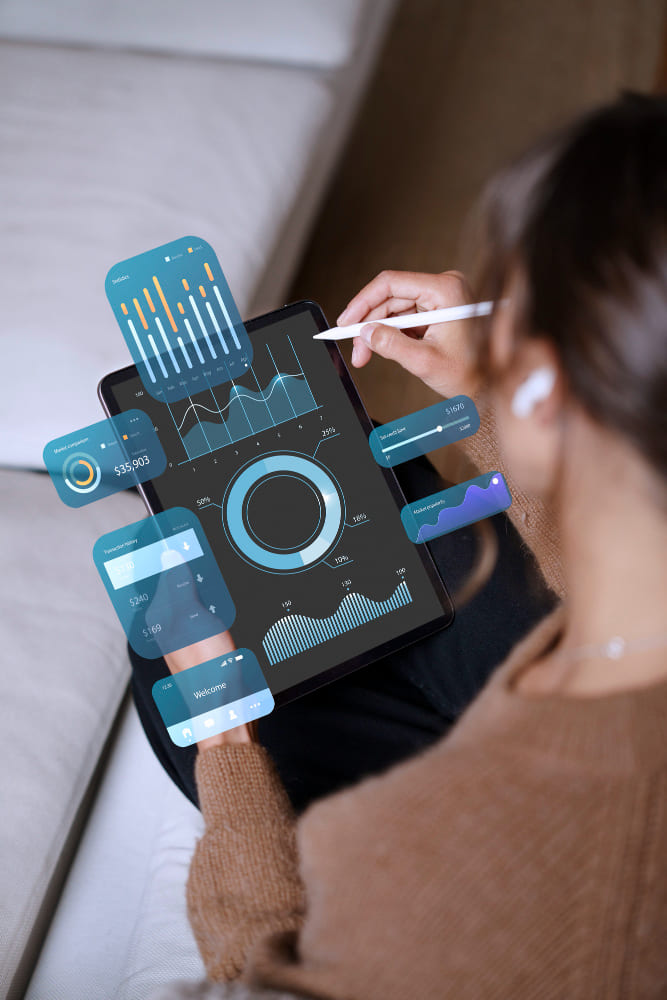In the fiercely competitive world of retail, understanding customer behavior and preferences is crucial for success. Retailers are constantly seeking innovative ways to enhance the shopping experience, optimize store layouts, and ultimately increase sales. One of the most powerful tools emerging in recent years is video analytics in retail industry. By leveraging advanced video analytics technology, retailers can unlock valuable customer insights that were previously difficult or impossible to capture.
The Rise of Video Analytics in Retail
Traditionally, retailers have relied on sales data, customer surveys, and manual observations to understand consumer behavior. While these methods provide useful information, they often lack the depth and immediacy required to respond to rapidly changing customer needs and market trends. Video analytics offers a real-time, data-driven approach that transforms ordinary surveillance footage into a rich source of actionable insights.
Modern video analytics systems utilize artificial intelligence (AI), machine learning, and computer vision to analyze video streams from in-store cameras. These systems are capable of tracking customer movements, counting foot traffic, analyzing dwell times, and even recognizing emotional responses. By converting visual data into meaningful metrics, video analytics empowers retailers to make informed decisions that improve both operational efficiency and customer satisfaction.
Understanding Customer Behavior at a Deeper Level
One of the most significant advantages of video analytics is its ability to map detailed customer journeys within a store. It tracks how shoppers navigate aisles, which displays attract the most attention, and how long customers spend at specific sections or products. This granular understanding helps retailers identify popular areas and bottlenecks, enabling smarter store layouts that facilitate easier navigation and encourage product discovery.
For example, if video analytics reveals that customers tend to bypass certain aisles or displays, retailers can investigate further to determine if the issue lies with product placement, signage, or lighting. Conversely, high engagement zones can be leveraged to promote new products or special offers. This dynamic adjustment based on real-time behavior leads to a more intuitive shopping experience and higher sales conversion rates.
Enhancing Personalized Marketing Efforts
Personalization has become a cornerstone of modern retail strategy, with consumers expecting tailored experiences both online and offline. Video analytics contributes significantly to this trend by providing insights into customer demographics such as age group, gender, and even mood. By understanding the composition of their in-store audience, retailers can design targeted marketing campaigns, adjust promotions, and create environments that resonate with their customer base.
In addition, video analytics can integrate with loyalty programs and point-of-sale data to build a comprehensive profile of shopper preferences. This integration allows retailers to offer personalized recommendations or discounts in real time, bridging the gap between digital marketing and physical retail.
Optimizing Staff Allocation and Customer Service
Another critical benefit of video analytics in the retail industry is its impact on staff management and customer service. By monitoring foot traffic patterns and customer density in different store areas, retailers can allocate staff more efficiently to high-demand zones during peak hours. This proactive approach ensures that customers receive timely assistance, reducing wait times and enhancing satisfaction.
Furthermore, video analytics can help identify behavior that signals a need for intervention, such as customers lingering in one place for too long or appearing confused. Retailers can then train their staff to be more attentive and responsive, fostering a welcoming atmosphere that encourages repeat visits.
Strengthening Loss Prevention and Security
Loss prevention remains a top priority for retailers, with shoplifting and inventory shrinkage posing significant challenges. Video analytics aids security teams by providing intelligent surveillance that goes beyond mere recording. It can detect suspicious behavior, such as loitering or unusual movement patterns, and send instant alerts to security personnel.
The system’s ability to recognize specific incidents—like product removal without purchase or unauthorized access to restricted areas—enables faster response times and reduces losses. By combining security with operational analytics, retailers achieve a balanced approach that protects assets without alienating customers.
Measuring the Effectiveness of Visual Merchandising
Visual merchandising plays a vital role in attracting customers and influencing their purchasing decisions. However, quantifying the impact of displays and promotional setups has traditionally been subjective. Video analytics changes this by providing empirical data on how customers interact with various merchandising elements.
By analyzing heat maps and dwell times around displays, retailers can assess which setups drive engagement and which fall flat. This feedback loop allows for continuous improvement of merchandising strategies, ensuring that investment in store aesthetics translates into measurable returns.
Conclusion
Video analytics in retail industry represents a paradigm shift in how retailers understand and engage with their customers. By unlocking deep insights into shopper behavior, preferences, and store dynamics, video analytics empowers retailers to create more personalized, efficient, and secure shopping environments. Beyond improving operational efficiency, this technology enhances the overall customer experience, driving loyalty and growth in a competitive marketplace.
Embracing video analytics is not merely an option for modern retailers—it is becoming an essential strategy for thriving in the digital age of retail. The journey toward smarter, data-driven retail starts with the powerful lens of video analytics, opening new horizons for customer understanding and business success.
- Unlocking Customer Insights with Video Analytics in Retail Industry
- Video analytics in retail industry helps analyze customer behavior, optimize store layouts, and enhance security for a better shopping experience.
- video analytics in retail industry
Related posts:
 Why KBH Games Is Perfect for Family-Friendly Online Entertainment
Why KBH Games Is Perfect for Family-Friendly Online Entertainment
 Build a Seamless School Portal with These Powerful Templates
Build a Seamless School Portal with These Powerful Templates
 7 Ways Aerospace Companies Are Using Composites to Elevate Aerial Robotics
7 Ways Aerospace Companies Are Using Composites to Elevate Aerial Robotics
 Samsung Galaxy S24 Ultra Price in Pakistan: A Closer Look at the Mid-Range Marvel
Samsung Galaxy S24 Ultra Price in Pakistan: A Closer Look at the Mid-Range Marvel
 The Ultimate Web Development Checklist for Building High-Performance Digital Experiences
The Ultimate Web Development Checklist for Building High-Performance Digital Experiences
 Benefits of AI-powered CCTV Cameras for Business Surveillance
Benefits of AI-powered CCTV Cameras for Business Surveillance
 Top App Development Agency UK – Transforming Ideas into Apps
Top App Development Agency UK – Transforming Ideas into Apps
 Transforming Oil and Gas Operations in Qatar with Microsoft Dynamics 365 Supply Chain Management
Transforming Oil and Gas Operations in Qatar with Microsoft Dynamics 365 Supply Chain Management





